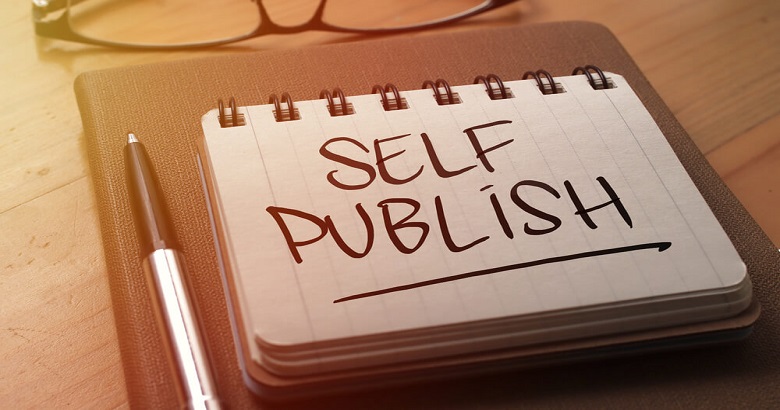A nonfiction book, like any work of art, is a labor of love. It’s the culmination of your knowledge, experience, and unique perspective.
So, if you’ve poured your heart and soul into writing your nonfiction book and are itching to share your work with the world, seeing your book published is an incredibly exciting milestone as an author but also an intimidating process with many options to consider. This detailed guide will explore the main avenues for publishing nonfiction – traditional, self, and hybrid models. By understanding the pros and cons of each path, you can determine the best route for your goals, budget, and priorities. Let’s dive in!
Traditional Publishing
With traditional publishing, you work with an established publishing house to handle all aspects of production, marketing, sales, and distribution. Many aspiring authors fantasize about landing a coveted book deal from a major publisher. Here’s a deeper look into this route:
Query Literary Agents
Research reputable agents who represent your book’s topic or nonfiction genre. Construct a compelling pitch letter and include the first few chapters. Landing an agent significantly increases your chances of publishers taking notice. Expect rejection – your flawless query is still a long shot. Keep revising and moving on to new agents.
Submit Manuscript to Publishers
If you secure representation, your agent will submit your full manuscript to acquiring editors at publishing houses they feel would be a good fit. In rare cases, publishers only consider unsolicited (non-agented) submissions, so an agent is key.
Negotiate the Book Deal
If an acquiring editor loves your book, they’ll make an offer. Your agent will negotiate all deal points like advance payment, royalty percentage, number of copies printed (print run), whether foreign or audio rights are included, and more on your behalf.
Publisher Handles Production
Once contracted, the publisher takes over editing, layout and design, printing, warehousing, distribution to retailers like Amazon, marketing campaigns, securing reviews, and all other related production functions.
Receive Royalties from Sales
On a set schedule (usually semi-annual), you’ll receive a statement and royalty payment for your share of book sales based on the negotiated royalty rate, usually starting around 10-15% of the cover price per book. Larger print runs and more copies sold equals more money in your pocket.
Pros
Your work gains exposure through a publisher’s robust marketing efforts and sales channels. The publisher shoulders most of the financial risk and production costs. Contracted advance payment offers upfront income.
Cons
Securing representation and a publishing deal is difficult – most authors experience numerous rejections. You relinquish creative control and have limited say in your book’s design, editing, marketing approach etc. Depending on book sales performance, royalties may not surpass your initial advance amount.
Self-Publishing

Self-publishing offers authors full control over their works but requires shouldering high costs and labor. Let’s break down the logistics:
Format Your Manuscript
Learn book formatting standards from self-publishing platforms like Amazon’s Kindle Direct Publishing (KDP). Your manuscript must be crafted into professional ebooks and print-ready PDF versions to industry specifications.
Select a Publishing Partner
Research services like KDP, IngramSpark, and CreateSpace to pick one that is aligned with your needs. Compare fees, distribution networks, capabilities and support.
Design Your Book Cover
Professionally, designing your book cover is crucial for standing out online. Hire a cover designer or learn powerful tools like Canva or Adobe InDesign to create a compelling design on your own.
Format Interior Book Design
Learn basic book layout or outsource complex formatting tasks like typesetting, adding headers/footers, and ensuring compatibility through a self-publishing solutions provider (SPSP).
Publish Your Book
Upload your files and complete your service’s publishing process to make your book instantly available worldwide through retailers. Expect a 30-90 day period for print versions to become available.
Handle All Promotion and Sales
As the publisher, you must market across all channels to gain traction. Craft newsletters and blog posts, build an audience on social media, run Facebook/Amazon ads, secure reviews, and distribute widely to bookstores and libraries.
Pros
You gain total control over creative decisions, pricing, and release schedule and keep all proceeds from sales. No need to pitch to gatekeepers for approval. Consistency in publishing future titles is straightforward.
Cons
You assume all financial risk without guarantees of returns. Significant promotion efforts are required for meaningful sales without a publisher’s machinery behind you. Sales success relies entirely on your abilities rather than a company’s brand and expertise.
Hybrid or Partnership Publishing

A hybrid model splits responsibility between you and a small independent press or “publisher partner.” This middle-ground offers some support without relinquishing full autonomy:
Research Hybrid Publishers
Identify companies that provide services ranging from basic distribution to full-scale production based on their rosters and mission statements. Specialized niche publishers may be preferable to large general interest houses.
Propose Your Book Project
Compile a formal book proposal including your credentials, market analysis, tentative table of contents, 2-3 sample chapters, and vision for how your publisher’s audience can benefit. Pitch directly via email or through a literary agent’s submissions.
Negotiate a Partnership Deal
If courted, a publisher will make an offer outlining editorial, production, sales, and marketing services they provide against expectations of your involvement, such as assisting promotion. Contract terms on royalties, print runs and responsibilities will vary considerably.
Partnership in Production and Promotion
The publisher handles assigned roles like editing, design, and printing. At the same time, you work as a team on promotion using your platform, author brand credibility, and some of their marketing budget and sales channels.
Pros
You gain dedicated support and industry validation without the difficulties of a full self-publishing effort. Partnerships are flexible – negotiate where you share tasks or opt to self-publish future titles independently.
Cons
Control is split between you and the publisher. Contracts are still binding legal documents requiring diligent review and potential concessions. Success depends on the strength of your partnership’s cohesion and abilities.
Core Publishing Essentials
Here are some cross-publishing fundamentals worth addressing no matter your specific route:
- Copyright & ISBN Registration: Completing simple copyright forms with the United States Copyright Office protects your work. International Standard Book Numbers (ISBNs) identify your unique editions – obtain free or paid ISBNs in advance through your publisher or independent registrar.
- Establish an Author Website: Build your platform by developing a professional author website to showcase your bio, book information, blog or articles, and ability to connect with readers.
- Distribution Options: Research utilizing the big wholesale distributors like Ingram and Baker & Taylor or partnering directly with retailers like Amazon, Barnes & Noble, and local bookstores to broaden access to buyers.
- Promotion Strategy: Craft a thoughtful multi-channel marketing plan leveraging current networks, ads, reviews, book signings, and more. Promotion requires ongoing dedication long after publication.
- Industry Etiquette: Respect proper lead times for seasonal catalogs, avoid risky legal issues, be responsive to requests, and represent yourself professionally at all times for sustainable career opportunities.
Wrap Up
Hope this comprehensive overview helped illuminate the full publisher spectrum and considerations. Carefully weighing factors like control, investment versus risk, return on investment, time, and resources available will lead you to the optimal path. With diligence, promoting your passion can pay off.



